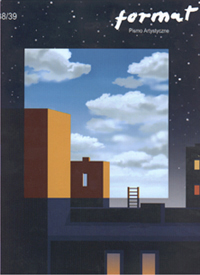Światło poza światłem. O twórczości Juliana Henryka Raczko
„Light Beyond Light”. On Julian Henryk Raczko’s Art
Author(s): Paulina SztabińskaSubject(s): Fine Arts / Performing Arts
Published by: Akademia Sztuk Pięknych im. Eugeniusza Gepperta we Wrocławiu
Keywords: exhibition of Julian Henryk Raczko’s work; performance
Summary/Abstract: In 1984, the Zachęta Gallery in Warsaw organised an exhibition of Julian Henryk Raczko’s work. In the forward to the catalogue, Raczko wrote that he was searching for “geometry beyond geometry”. In his other interviews, he used to concentrate on light. He was interested in different kinds of visible radiation. His early series were entitled “Radiation”, and Cosmic Landscapes”. He covered his canvases with thick layers of paint, and he placed the patches of bright colours on dark surface. Although, he didn’t use gold leaf as the background in his pictures, his pictures radiate with light. His “Pulsars” show more regular geometric forms. In that series, the artist used a wide range of colours. His “Morphologies” included farther studies of geometric forms. He continued his experiments with geometric forms in yet another series entitled “”Morphological Changes”. He painted not only on canvases, but, also, on wooden frames which he added to his pictures. In 1977, Raczko showed a series of drawings which also was entitled “Morphological Changes”. In fourteen drawings, he studied round shapes surrounded by many black-and-white lines. In each drawing, the ball was shown bigger. As the result of that, the original shape of the ball became invisible. In 1978, he organised a performance which included laser beams and mirrors. White smoke diffused the beams, and electronic music suggested that the rhythms of both geometric light-drawings and sounds slowly disappear. In 1981, Raczko organised a performance which was entitled “Soli Deo”. The sounds of church bells accompanied his sculpting of a simple wooden cross. In a series of pictures entitled “A Square and a Circle”, the artist again showed intricate relations of light and shadow. Two pictures were black, one white, and others included a small black circle, smaller in each picture. Raczko believes that the white colour is the symbol of hope, and the black colour symbolises dust.
Journal: Format - Pismo artystyczne
- Issue Year: 43/2003
- Issue No: 03+04
- Page Range: 031-033
- Page Count: 3
- Language: Polish

